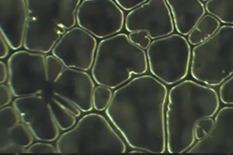News Story
What You Should Know About Pressure Sensitive Adhesive (PSA) Joints in Consumer Electronics


PSA joints are used in structural and electronic products due to the advantages they offer, including low processing temperatures and low cost. In electronic products, they are used to bond plastic or metal substrates together and to bond glass displays on polymer substrates. Joints made with different PSA materials and different substrates (as characterized by surface free energy and roughness) exhibit different effective mechanical behavior. Other factors that affect the joint behavior are joint geometry (thickness, width, and warpage) and the carrier layers (if any). Ensuring satisfactory performance of PSA joints (including creep performance) requires careful design, fabrication, based on an understanding of the underlying deformation mechanisms. The fundamental objective for achieving a well-bonded joint is to create and maintain robust contact at interfaces in the PSA joint.
The behavior of a PSA-bonded joint is also dependent on the fabrication conditions (bonding force, temperature, time); fabrication variabilities and defects; and life-cycle stress histories (mechanical stress, temperature, and moisture).
CALCE has been conducting various investigations on the short-term and long-term mechanical performance issues in the PSA joints of consumer electronic products. Our investigations indicate that PSA joints behave uniquely, as seen in Fig. 1, with multiple transitions in their stress-strain and creep curves. Fig. 2 shows the underlying physics behind these transitions via cavitation and fibrillation.

This study shows that the mechanical performance of a PSA joint cannot be understood by looking only at the material properties of PSA. Instead, we need to look holistically at all the important parameters listed above in this article. It has also developed a model for mechanical deformation, based on the underlying fundamental physics. Such a model is useful for design, virtual testing and as a digital twin to facilitate cradle-to-grave management of the behavior of PSA joints throughout their life-cycle.
For more information on this research, contact Prof. Abhijit Dasgupta.
Published February 17, 2020




